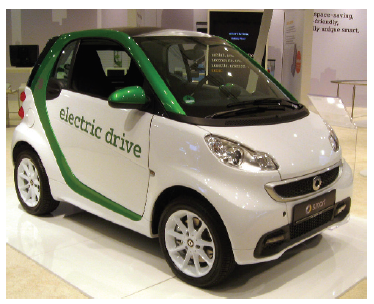1. What is Smarts competitive advantage? Brand promise? Positioning? 2. How does the Smart compare to the...
Question:
2. How does the Smart compare to the Honda Element, Scion iQ, Kia Soul, or Fiat 500? Are these models targeting the same consumers as the Smart? In view of the success of these brands, do you think the Smart€™s U.S. launch is too late?
3. As noted in the case, Penske Automotive Group is no longer the distributor for Smart USA. How will this affect Smart€™s fortunes in the United States?
4. Evaluate Smart USA€™s social media strategy. Discuss what additional channels or tactics you would recommend.
In the summer of 2006, DaimlerChrysler announced that the company€™s Smart car would be offered for sale in the United States the following year. Launched in Europe in 1998, the diminutive Smart had never turned a profit for its parent company. When Dieter Zetsche became DaimlerChrysler€™s CEO at the beginning of 2006, the Smart car issue was one of his top priorities. At the time of the announcement, the Smart saga had been 15 years in the making. In 1991, Nicolas Hayek, chairman of Swatch, announced plans to develop a battery-powered €œSwatch car€ in conjunction with Volkswagen.
At the time, Hayek said his goal was to build €œan ecologically inoffensive, high-quality city car for two people€ that would sell for about $6,400. The Swatchmobile concept was based on Hayek€™s conviction that consumers become emotionally attached to cars just as they do to watches. Like the Swatch, the Swatchmobile (officially named €œSmart€) was designed to be affordable, durable, and stylish (see Exhibit 10-13).
Early on, Hayek noted that safety would be another key selling point, declaring, €œThis car will have the crash security of a Mercedes.€ Composite exterior panels mounted on a cage-like body frame would allow owners to change colors by switching panels. Further, Hayek envisioned a car that emitted almost no pollutants, thanks to its electric engine. The car would also offer gasoline-powered operation, using a highly efficient, miniaturized engine capable of achieving speeds of 80 miles per hour. Hayek predicted that worldwide sales would reach 1 million units, with the United States accounting for about half the market. Then, in 1993, the alliance with Volkswagen was dissolved. In the spring of 1994, Hayek announced that he had lined up a new joint venture partner. The Mercedes-Benz unit of Daimler-Benz AG would invest 750 million Deutsche marks in a new factory in Hambach- Saargemuend, France. In November 1998, after several months of production delays and repeated cost overruns, Hayek sold Swatch€™s remaining 19 percent stake in the venture, officially known as Micro Compact Car GmBH (MCC), to Mercedes. A spokesman indicated that Mercedes€™ refusal to pursue the hybrid gasoline/battery engine was the reason Swatch withdrew from the project.
The decision by Mercedes executives to take full control of the venture was consistent with its strategy for leveraging its engineering skills and broadening the company€™s appeal beyond the luxury segment of the automobile market. As Mercedes chairman Helmut Werner said, €œWith the new car, Mercedes wants to combine ecology, emotion, and intellect.€ Approximately 80 percent of the Smart€™s parts are components and modules engineered by and sourced from outside suppliers and subcontractors known as €œsystem partners.€ The decision to locate the assembly plant in France disappointed German labor unions, but Mercedes executives expected to save 500 marks per car. The reason: French workers are on the job 275 days per year, while German workers average only 242 days; also, overall labor costs are 40 percent lower in France than in Germany.
MCC claims that at Smart Ville, as the factory is known, only 7.5 hours are required to complete a vehicle€”25 percent less time than that required by the world€™s best automakers. The first 3 hours of the process are performed by systems partners. A Canadian company, Magna International, starts by welding the structural components, which are then painted by Eisenmann, a German company. Both operations are performed outside the central assembly hall; a conveyer then transports the body into the main hall. There, VDO, another German company, installs the instrument panel. At this point, modules and parts manufactured by Krupp-Hoesch, Bosch, Dynamit Nobel, and Ymos are delivered for assembly by MCC employees. To encourage integration of MCC employees and system partners and to underscore the need for quality, both groups share a common dining room overlooking the main assembly hall.
Exhibit 10-3

Step by Step Answer:






